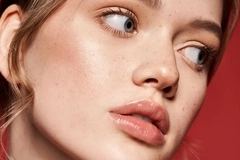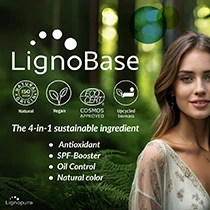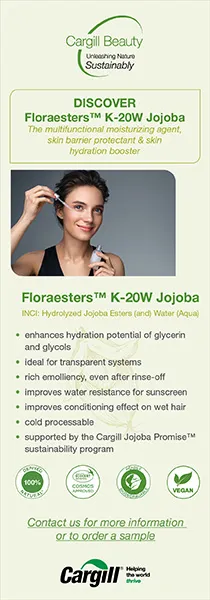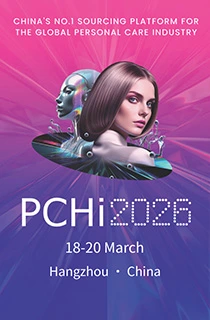Scientists say machine learning may accelerate global ban on animal testing outside EU

27 Aug 2024 --- In an era where machine learning models are used to predict the safety of cosmetic products, scientists from the University of Vienna, Austria, developed MolCompass to identify “blind spots” in the chemical space to support the global push toward eliminating animal testing. Personal Care Insights talks to senior scientist Sergey Sosnin of the university’s Pharmacoinformatics Research Group, who says personal care companies should integrate MolCompass in testing compounds.
According to the researchers, MolCompass increases confidence in machine learning predictions:
“Nowadays, there is a significant increase in the generation and storage of chemical data in medicinal and organic chemistry. This process can be described as the sunrise of the “Big Data” era in chemistry,” note the paper authors.
“However, this increase in data poses a challenge, limiting humans’ abilities to analyze and process such large datasets effectively. The development of tools that represent chemical data in a handy graphical way can augment humans’ abilities to analyze large datasets.”
The study also underscores a significant problem in computational toxicology: the risk associated with models that produce high-confidence predictions. Sosnin highlights a “nightmare scenario” where a model predicts a compound as “non-toxic” with near certainty, yet the compound turns out to be harmful.
The scientists say MolCompass resolves this issue by showing them places where the model breaks down. The tool’s use was illustrated with an estrogen receptor binding model, which indicated that it can predict some chemical classes accurately but fails with others. Based on this, Sosnin’s team highlights the need to carefully evaluate the model’s performance before implementing it widely.
How does the MolCompass tool improve the reliability and transparency of machine learning models used in the cosmetics industry?
Sosnin: Machine learning models are widely used in the cosmetics industry to predict the toxicological properties of small organic compounds, which are key ingredients in cosmetic products. For instance, machine learning models are commonly employed to predict skin sensitivity, as seen in the study “Skin Doctor: Machine Learning Models for Skin Sensitization Prediction that Provide Estimates and Indicators of Prediction Reliability.” Another example is the prediction of eye irritation (as seen in research conducted by L’Oréal Research & Innovation). MolCompass helps evaluate these models by identifying regions of chemical space where the models have low performance, thereby providing a cautionary alert. With MolCompass, the toxicologist can pinpoint regions where the model under investigation incorrectly predicts activity with high confidence (Image credit: Sosnin).
With MolCompass, the toxicologist can pinpoint regions where the model under investigation incorrectly predicts activity with high confidence (Image credit: Sosnin).
What impact do you predict MolCompass will have on the reduction or elimination of animal testing in cosmetics?
Sosnin: While animal testing is fully banned in the EU, it remains permissible in some countries where non-animal methods, including machine learning models, are considered less reliable for regulatory purposes. To overcome this lack of trust, a more robust characterization of these machine learning models is necessary. MolCompass can assist companies and authorities in analyzing the performance of machine learning models used in cosmetics, for example, for skin sensitivity. The more trust authorities place in in-silico modeling, the higher the likelihood that a full ban on animal testing will be implemented in countries where it is still allowed.
How can cosmetics companies integrate MolCompass into their existing risk assessment processes?
Sosnin: Currently, major pharmaceutical and personal care companies use machine learning models for in-silico evaluation of the biological and toxicological properties of organic compounds. The development of every new model follows a pipeline: data collection -> data integration -> model building -> performance estimation and applicability domain assessment -> deployment into production. To enhance this process, companies should integrate MolCompass to visually validate the applicability domains, particularly by identifying areas of the chemical space where the model’s performance is suboptimal.
How may the discovery of “blind spots” impact the creation of new cosmetics?
Sosnin: Computational modeling is significantly cheaper and faster than conducting animal tests. However, the key concern is the trustworthiness of these models. By properly identifying “blind spots,” companies gain a better understanding of model behavior, enabling them to confidently use the models for compounds within the applicability domain. This understanding can accelerate the development of new cosmetic products. Senior scientist Sergey Sosnin at University of Vienna.
Senior scientist Sergey Sosnin at University of Vienna.
How does your research contribute to non-animal testing methods in the cosmetics industry?
Sosnin: As mentioned earlier, one possible approach for next-generation testing strategies is to replace animal tests with computational models. MolCompass could be instrumental in validating these computational models, thereby supporting the broader adoption of non-animal testing methods in the cosmetics industry.
Companies seek solutions
Unilever, Clariant and Vantage recently pioneered next-gen chemical safety for reducing animal testing under REACH to ensure that animals are used as a “last resort.”
SenzaGen received a grant from the Research Institute for Fragrance Materials worth SEK 1.5 million (US$142,270) to assess chemical substances’ allergenicity using its animal-testing-free technology.
Boston Micro Fabrication launched a venture focused on developing and commercializing BioChips — tiny, microfluidic organ-on-a-chip platforms that mimic human tissue.
By Venya Patel












